
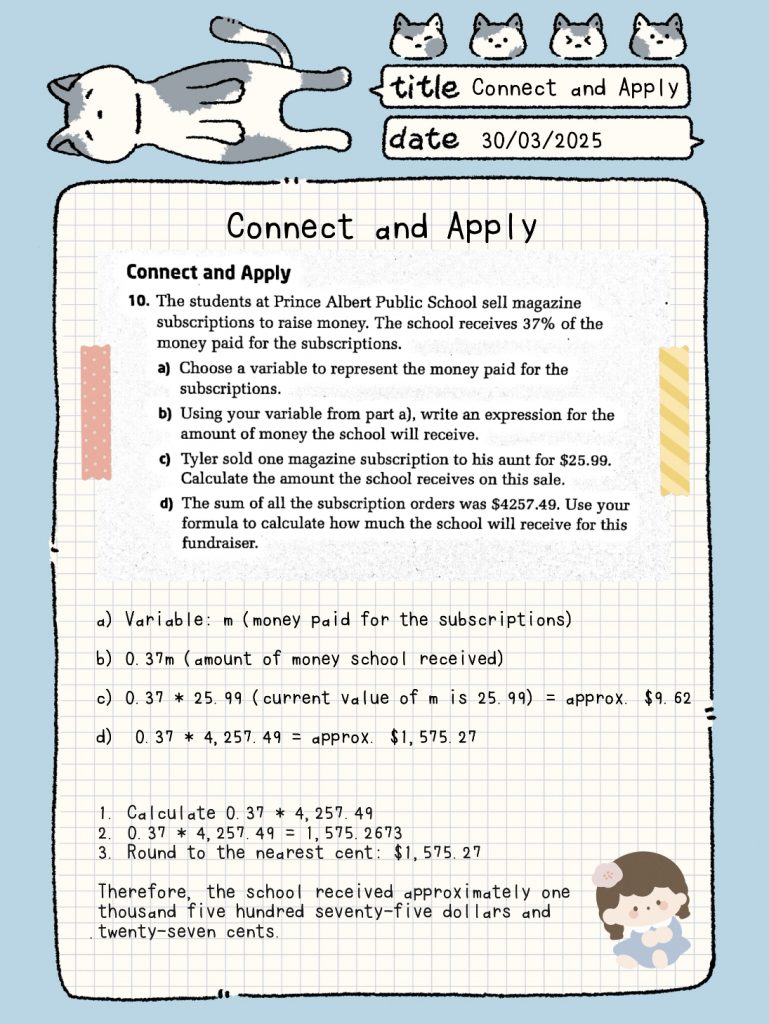



A few weeks ago, I had the special opportunity to spend three weeks at a school in Japan to learn about the lifestyle of Japanese students. The journey began when my dad’s colleague offered me this chance. Initially, I was nervous because I barely knew any Japanese, but then I decided that my main purpose of my visit was to help the Japanese students practice English.
A week before my adventure started, I met my homeroom teacher, who spoke fluent English, and some of the students. I was warmly welcomed and realized that the students were no less nervous about meeting me than I was about meeting them. Many were shy and simply said hi, while others introduced themselves in English. I quickly noticed that there was no whispering or rude behavior, just kindness from everyone. After our meeting, I said goodbye and felt exhausted from the new experience, knowing that my three weeks at the school were just beginning.
On the first day of school, I made a new friend and exchanged phone numbers with a student. I soon discovered that most students used the LINE app for communication outside of school. Unfortunately, my Canadian phone number made it impossible for me to download the app. Despite this, I continued to text students using other messaging apps and enjoyed chatting with them outside of school.

I also experienced taking a public bus to school for the first time, which is a common practice in Japan. At the end of each school day, we cleaned the entire school. Initially, I thought I wouldn’t enjoy this task, but I ended up liking the process and appreciated the clean result.
On the last day of school, I said goodbye and cried with the friends I had made. I realized that language barriers can’t stop people from becoming close friends. By the end of my visit, my Japanese had improved, and I was accustomed to responding quickly to common questions. My friends and I now chat online every day.

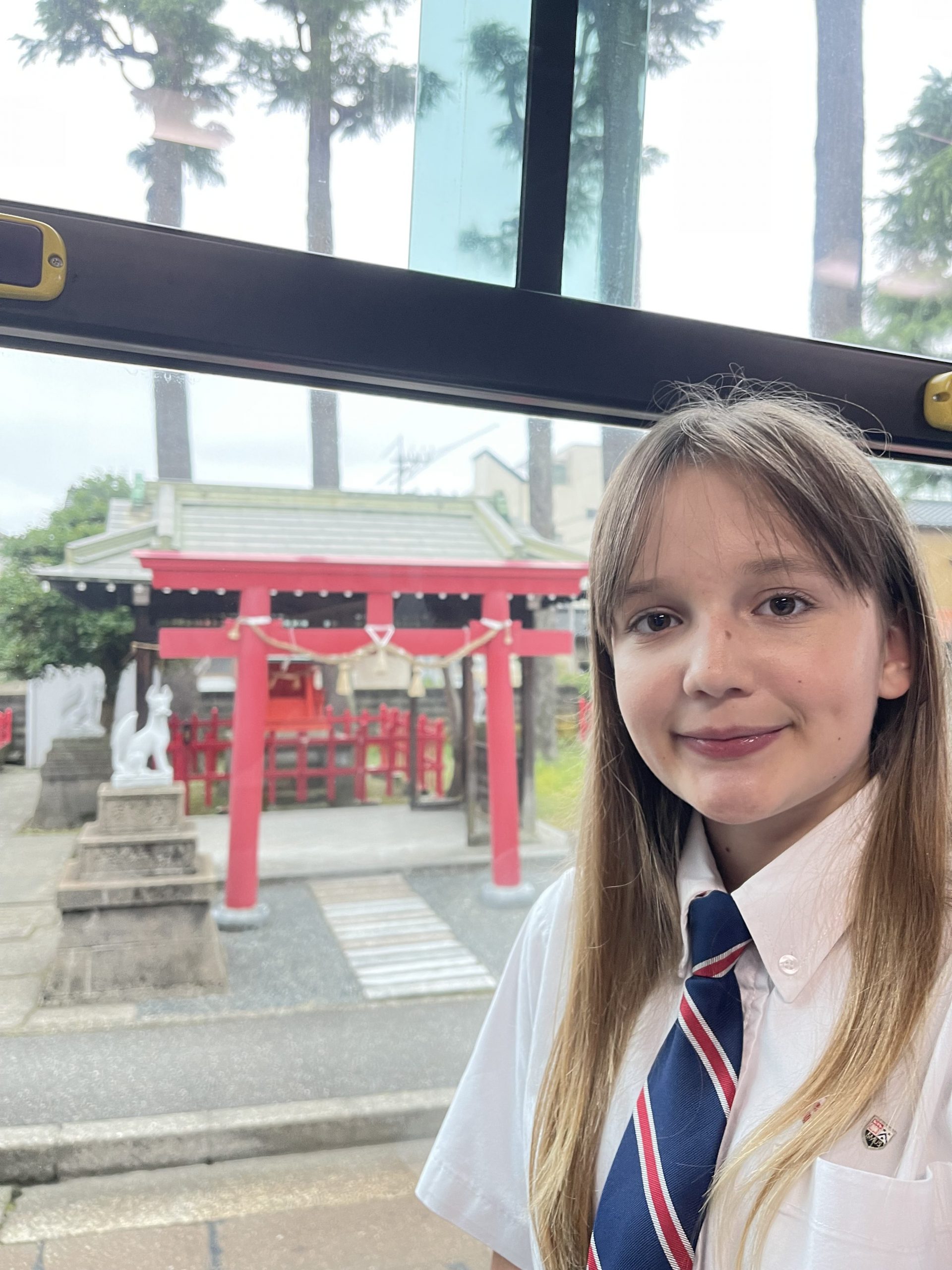

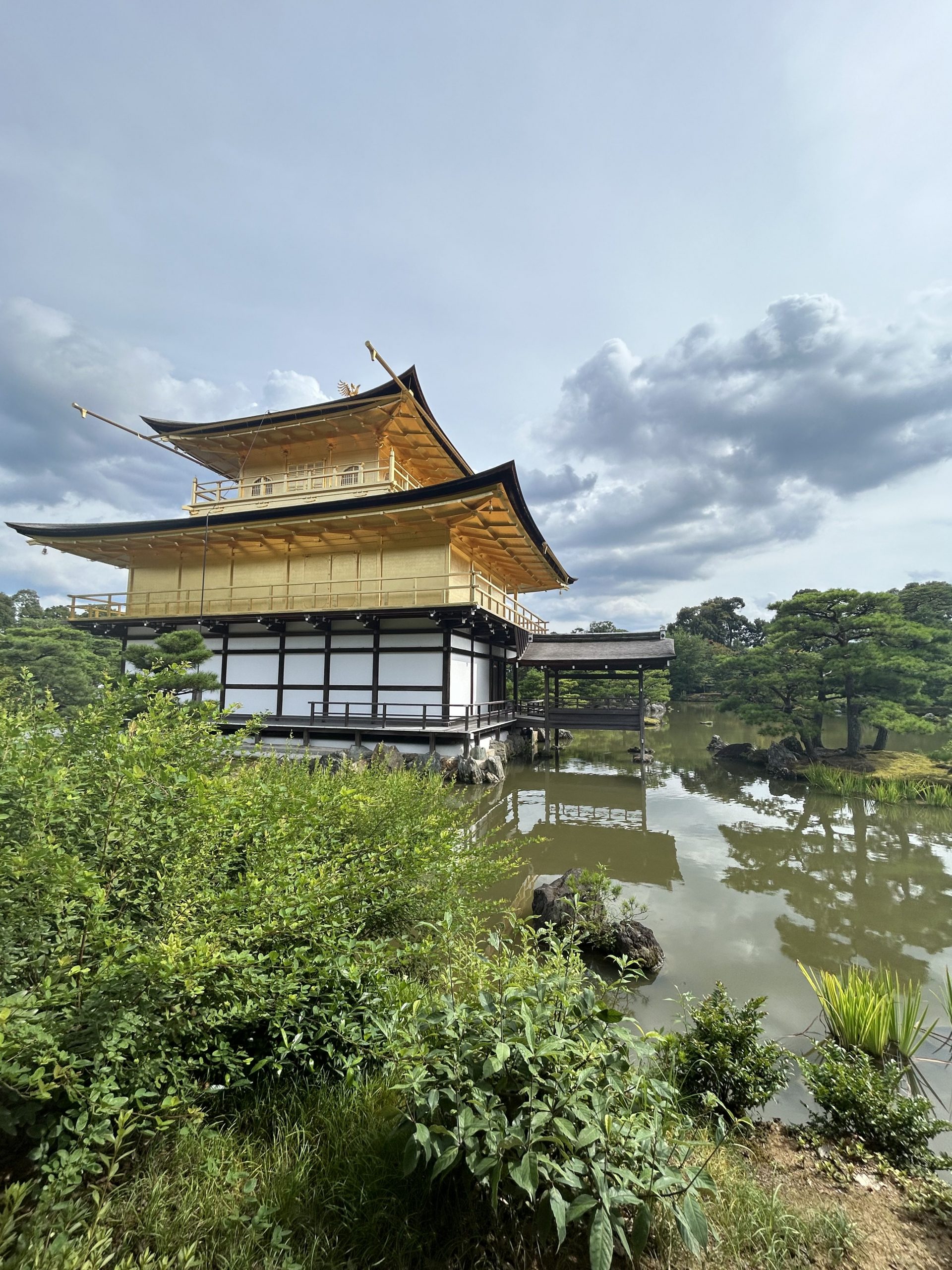
Today, my parents and I visited Kinkaku-ji, also known as the Golden Pavilion. The name fits perfectly because the building glows with gold, reflecting beautifully in the water below. The walk to the pavilion was short, and we spent some time at the railing taking selfies and soaking in the view. The weather was quite warm, making the walk less comfortable, especially since most of the path was exposed to the sun. The placement of the trees around the garden ensured that we could see the golden pavilion from almost anywhere on the route.
We took many photos and learned about the history of the pavilion. It was originally built in 1397 C.E. as a retirement villa for Ashikaga Yoshimitsu, a Japanese shogun. After Yoshimitsu’s death, the pavilion was given to Zen Buddhist monks. Sadly, it was burned down in 1950 by a young monk named Hayashi Yoken. The temple was rebuilt in 1955, but instead of using modern techniques, the builders chose to use traditional methods, carefully applying each sheet of gold leaf by hand. I found this dedication to preserving traditional craftsmanship very inspiring.

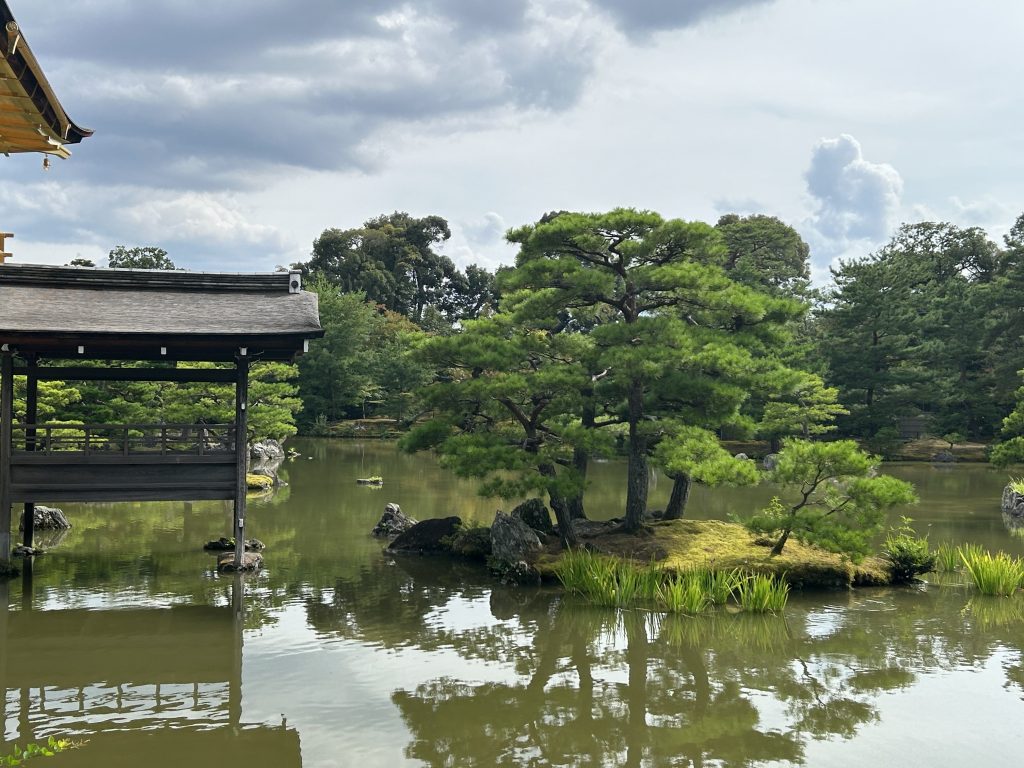
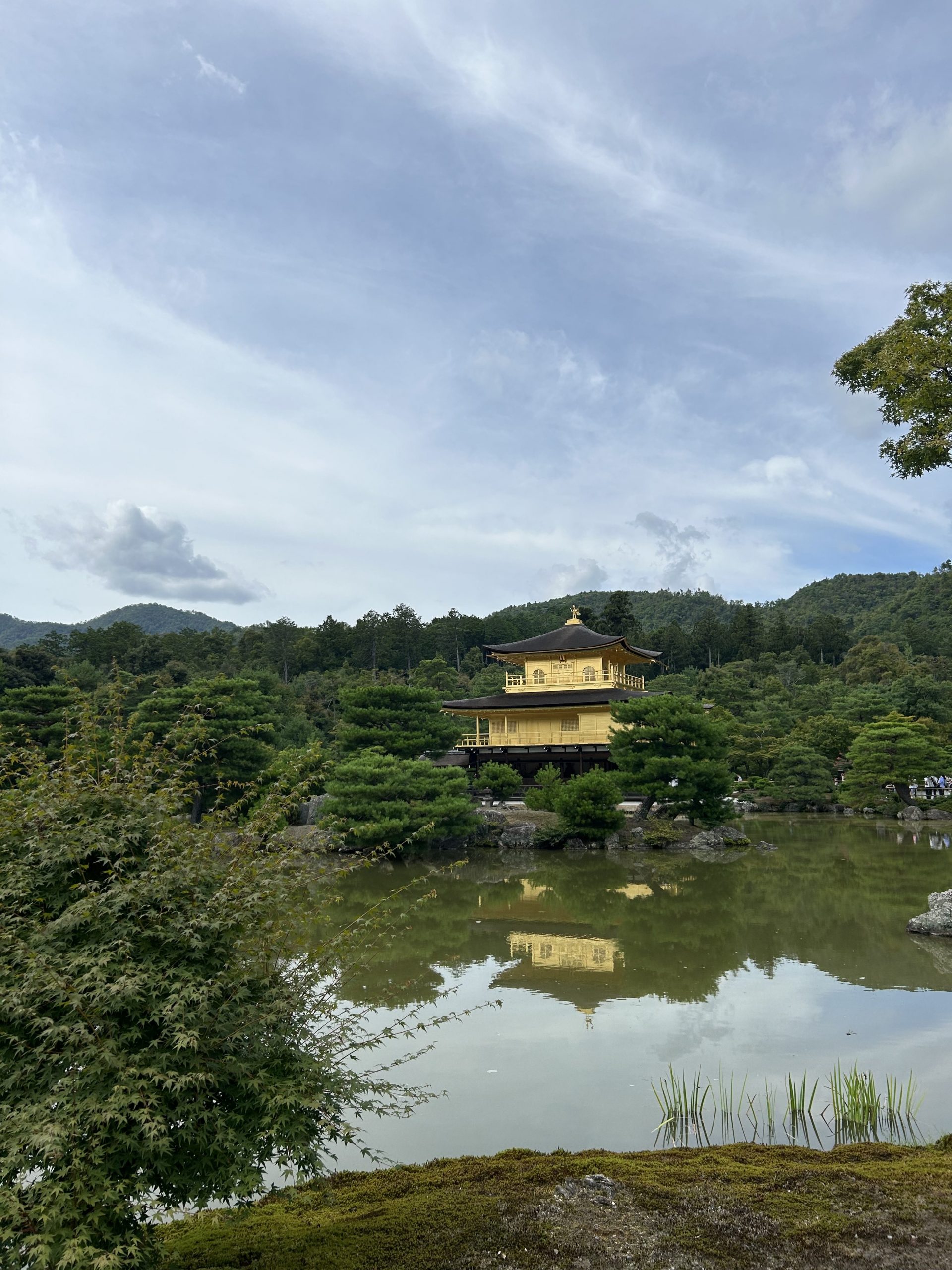
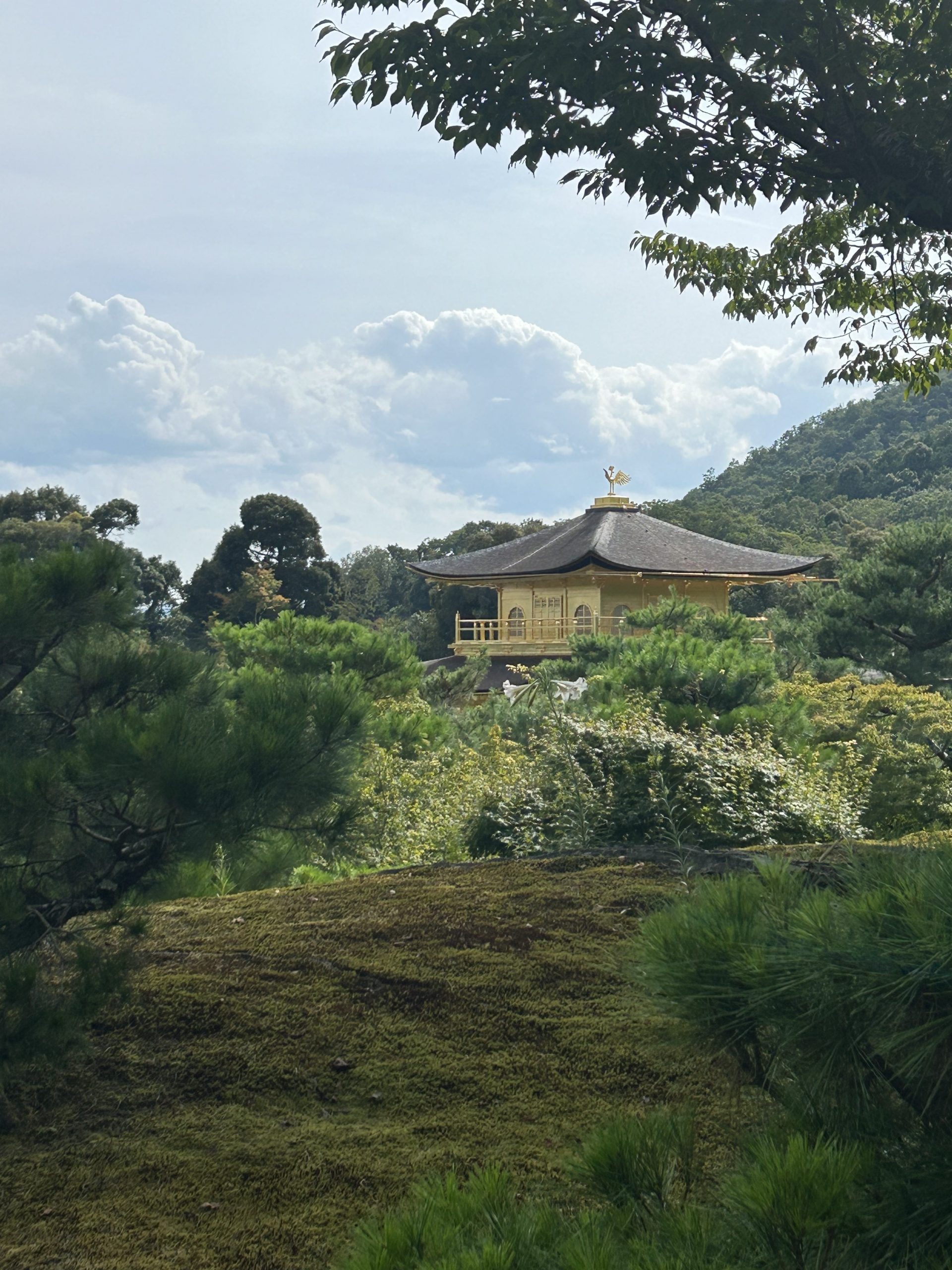
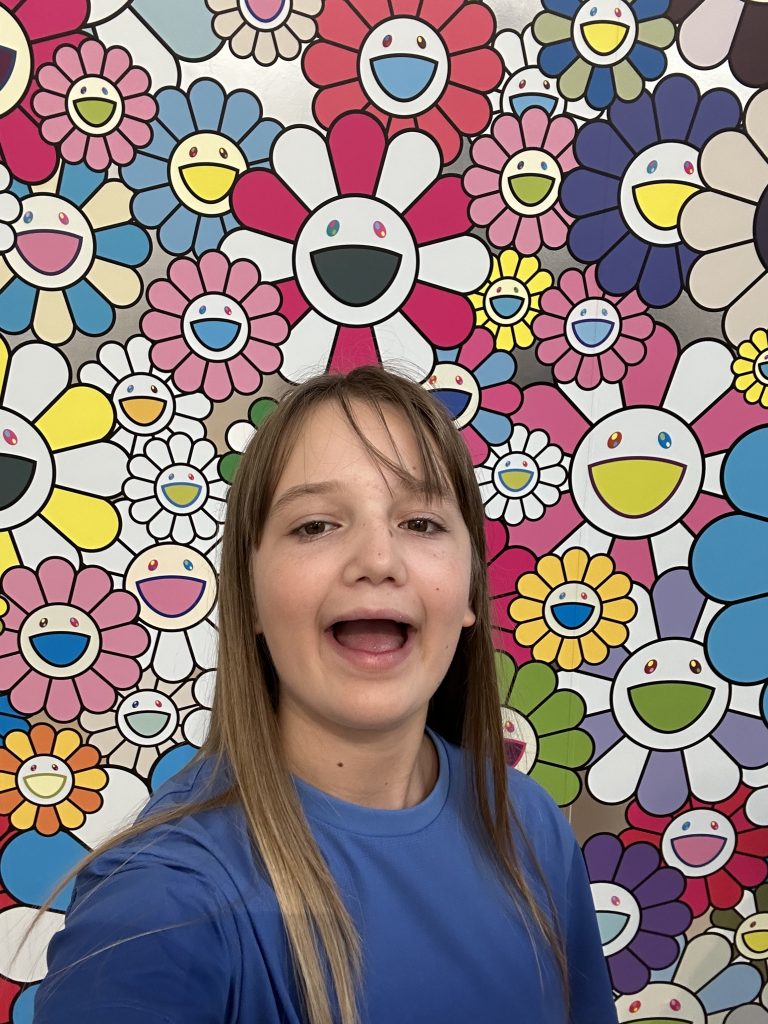
This summer, my parents and I traveled to Japan and visited the Kyoto City Kyocera Museum of Art to see the Takashi Murakami exhibit. Upon entering the museum, we were greeted by two friendly-looking demon figures holding large bats. After taking a fun photo of my dad posing with one of the demons, we moved into the first exhibition room.
We were pleasantly surprised to find that photography was allowed, so we took many pictures and selfies to remember our visit. Unlike other modern art, Takashi Murakami’s work features intricate patterns and recurring characters. I enjoyed finding connections between different pieces, even if the details were subtle.
As we moved from room to room, the art became increasingly chaotic. We saw cute bears evolving into images of the rainbow-eyed MR DOB, each piece showing a different variation of the character. After exploring the exhibit, we visited the museum shop, where we bought some merchandise and an excessive amount of mystery magnets. It was a memorable experience, and we’re glad to bring these memories back to Canada.
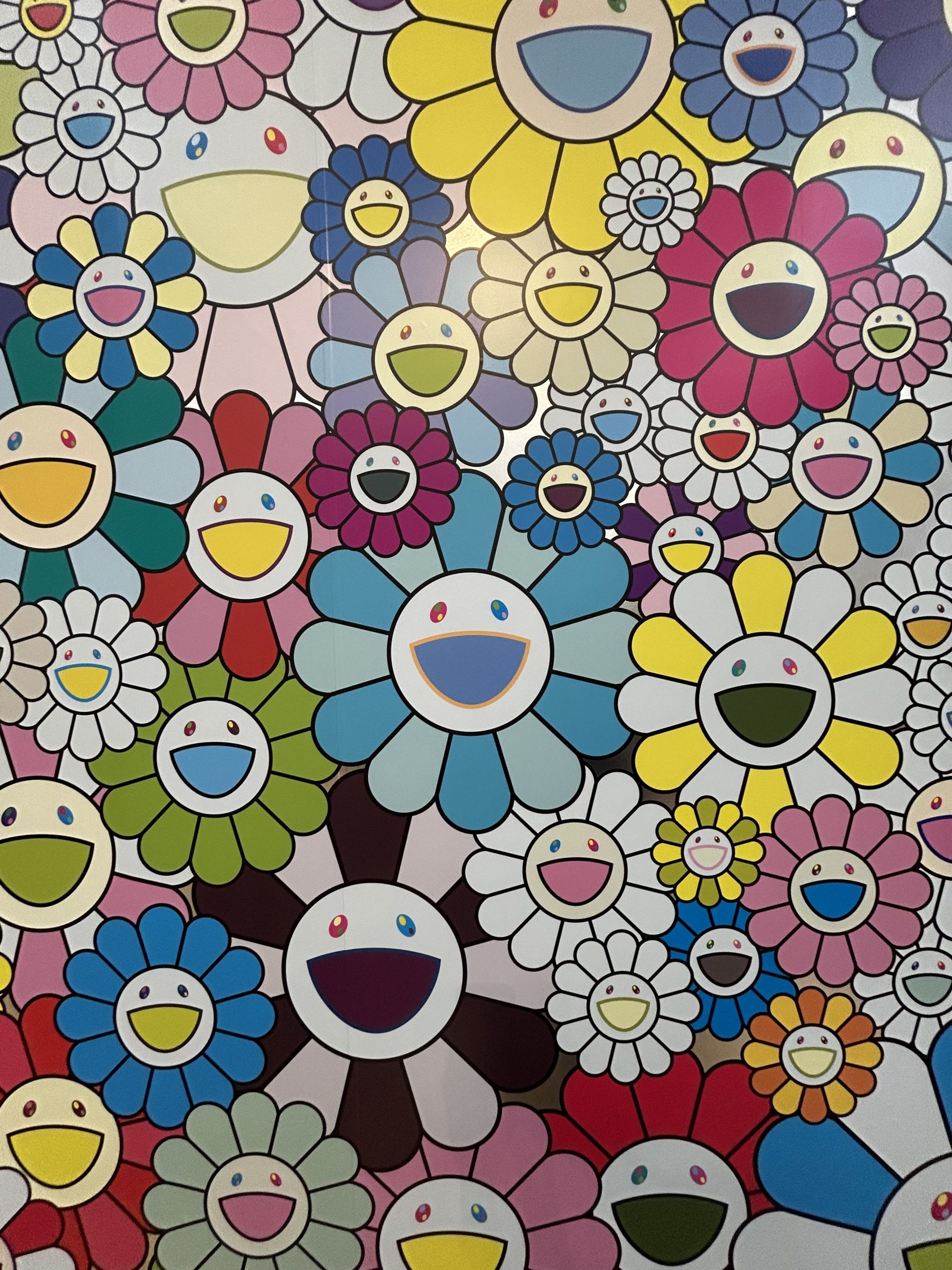
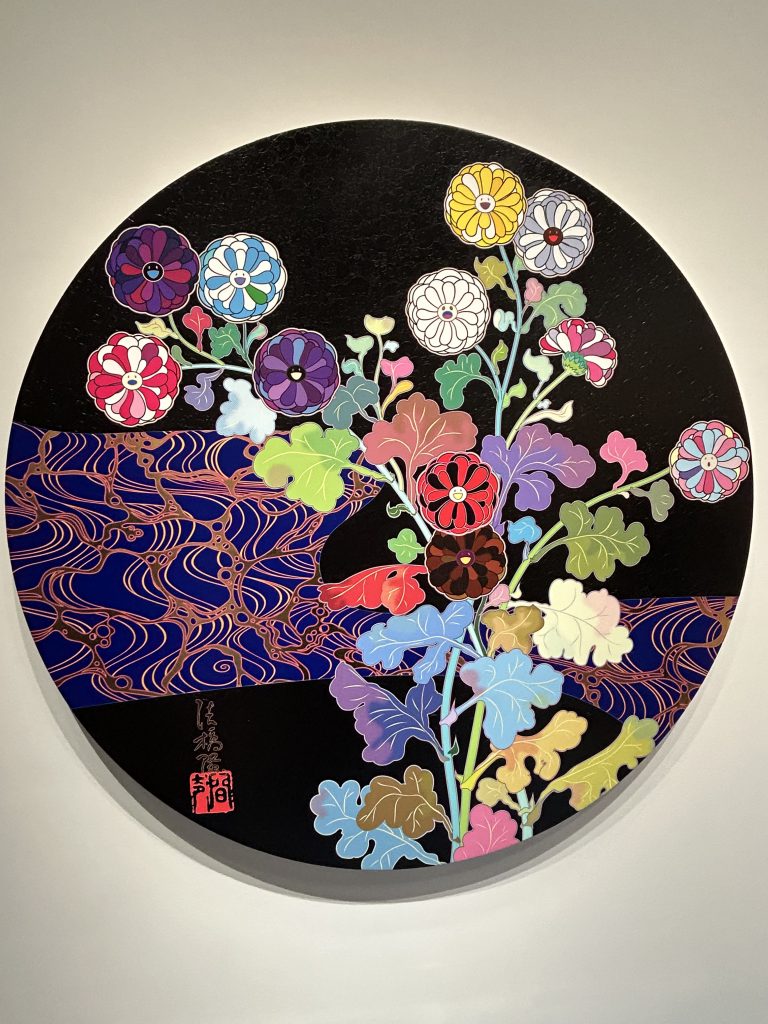

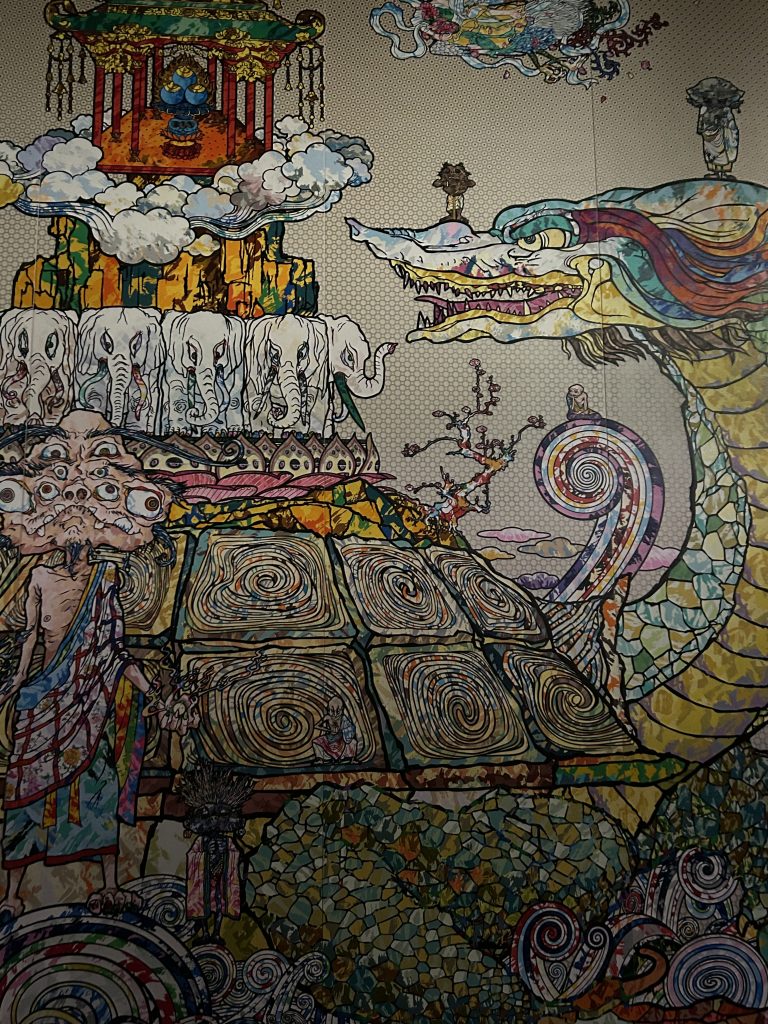
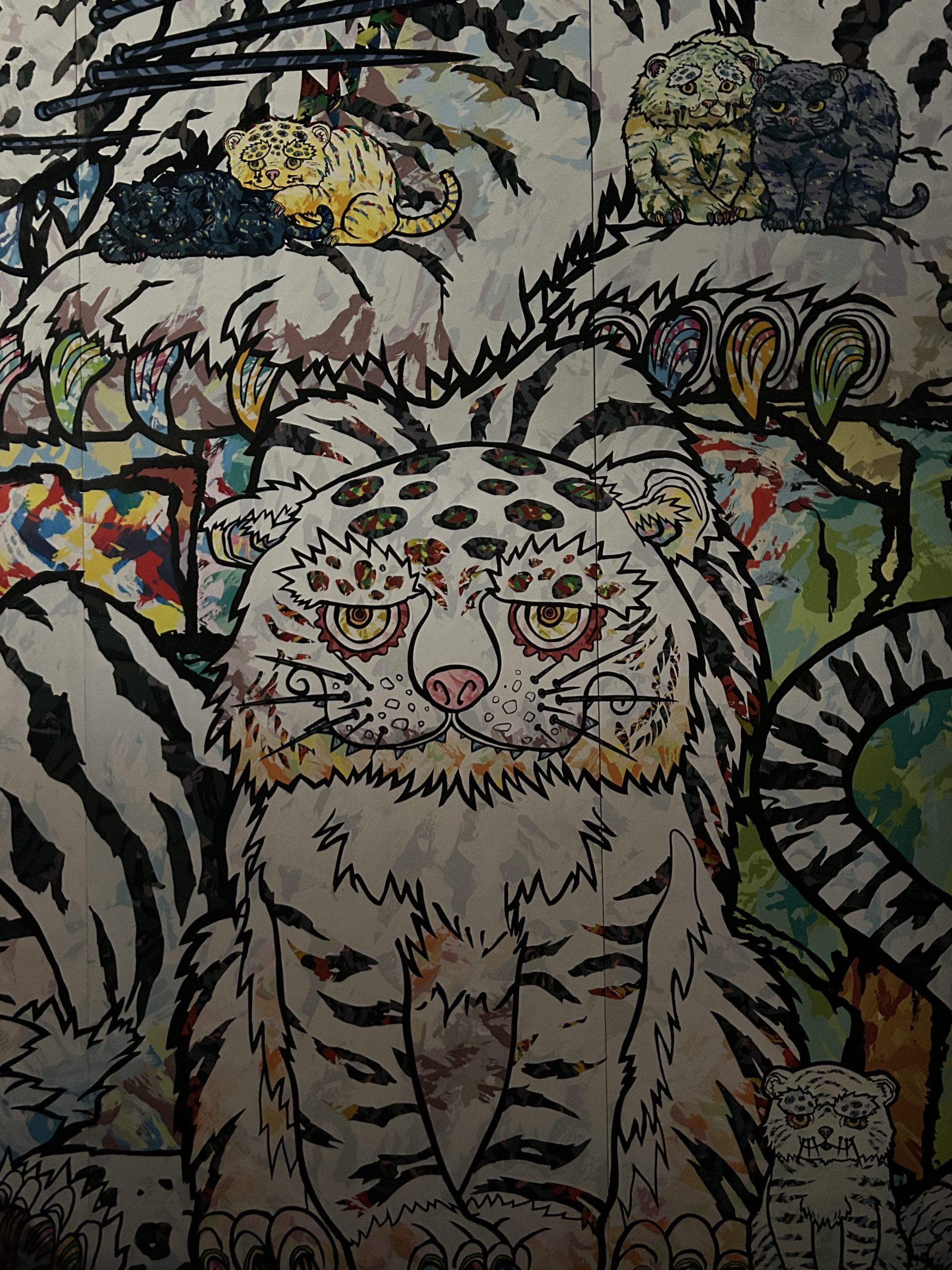
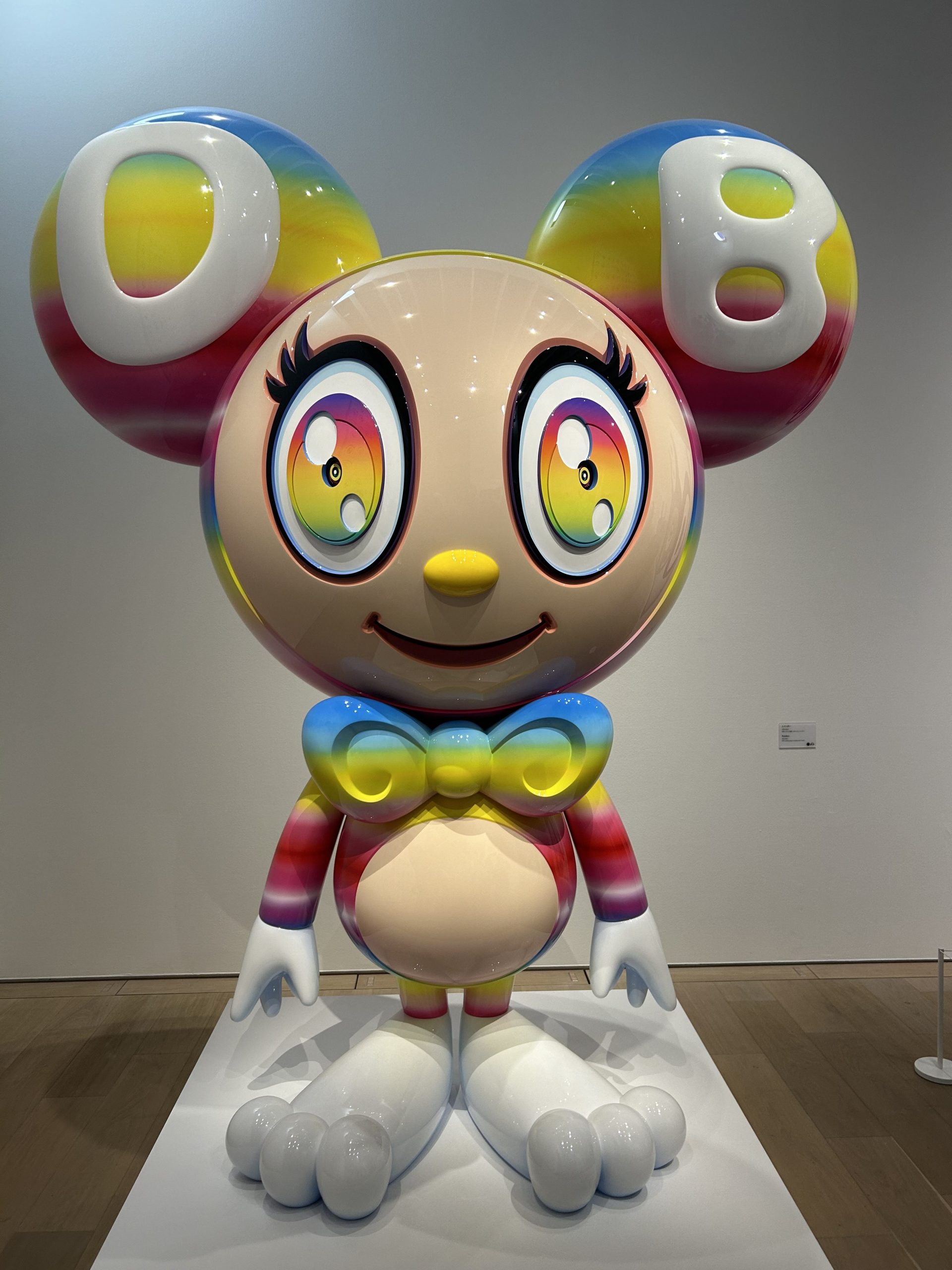
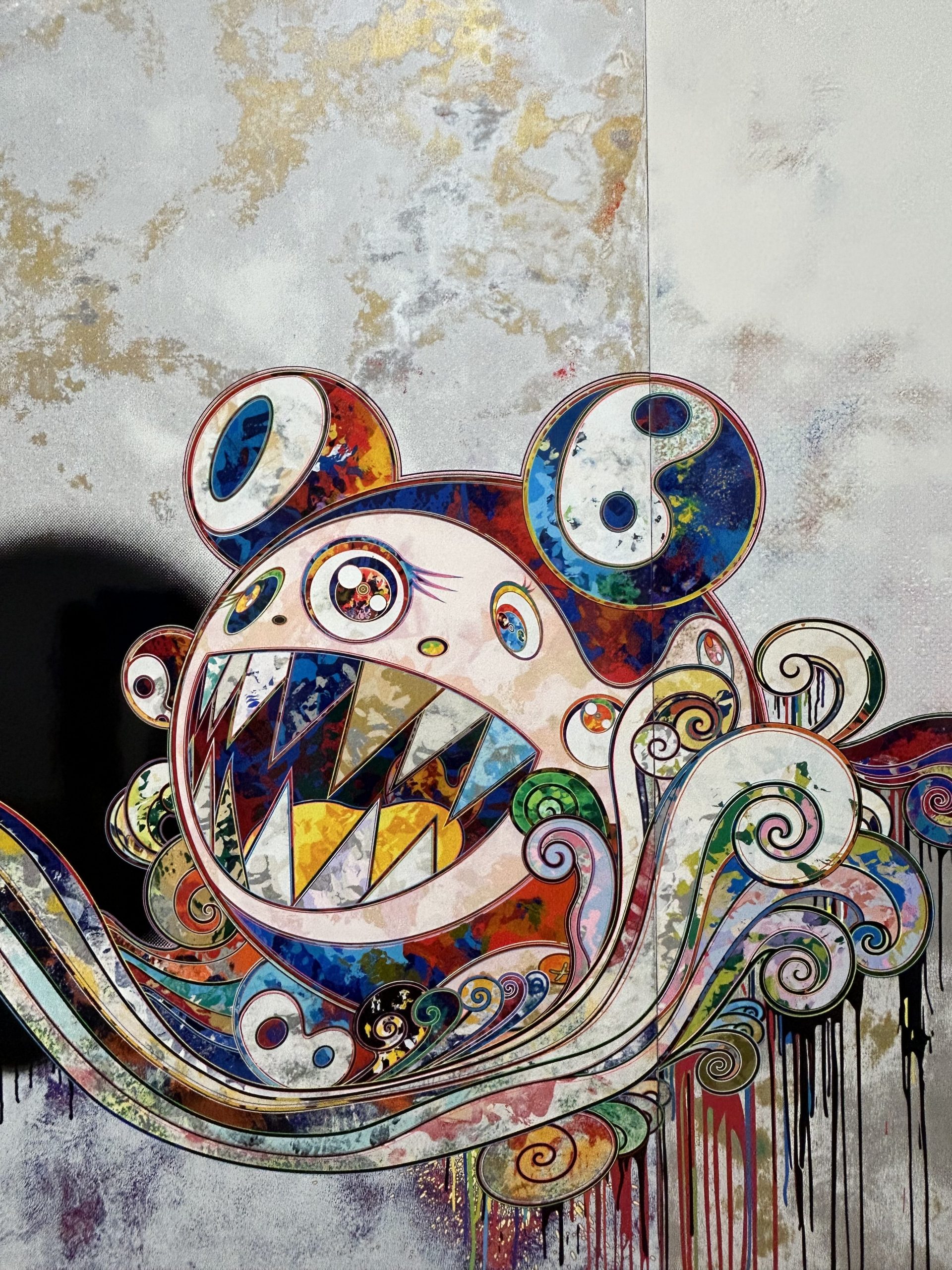
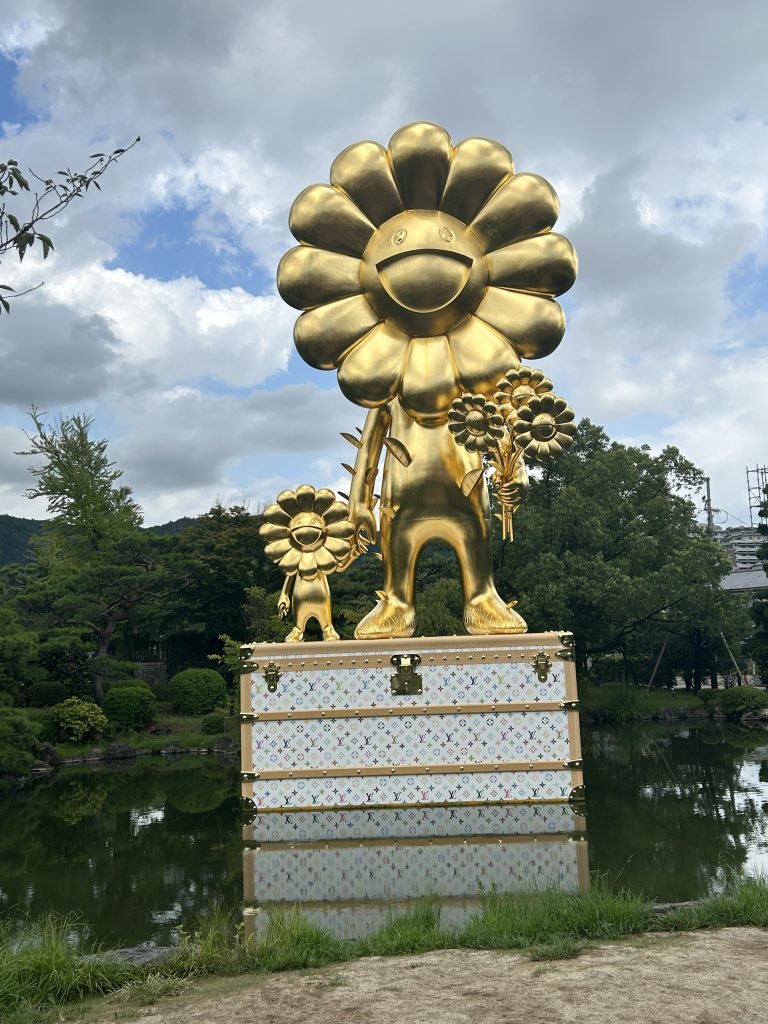
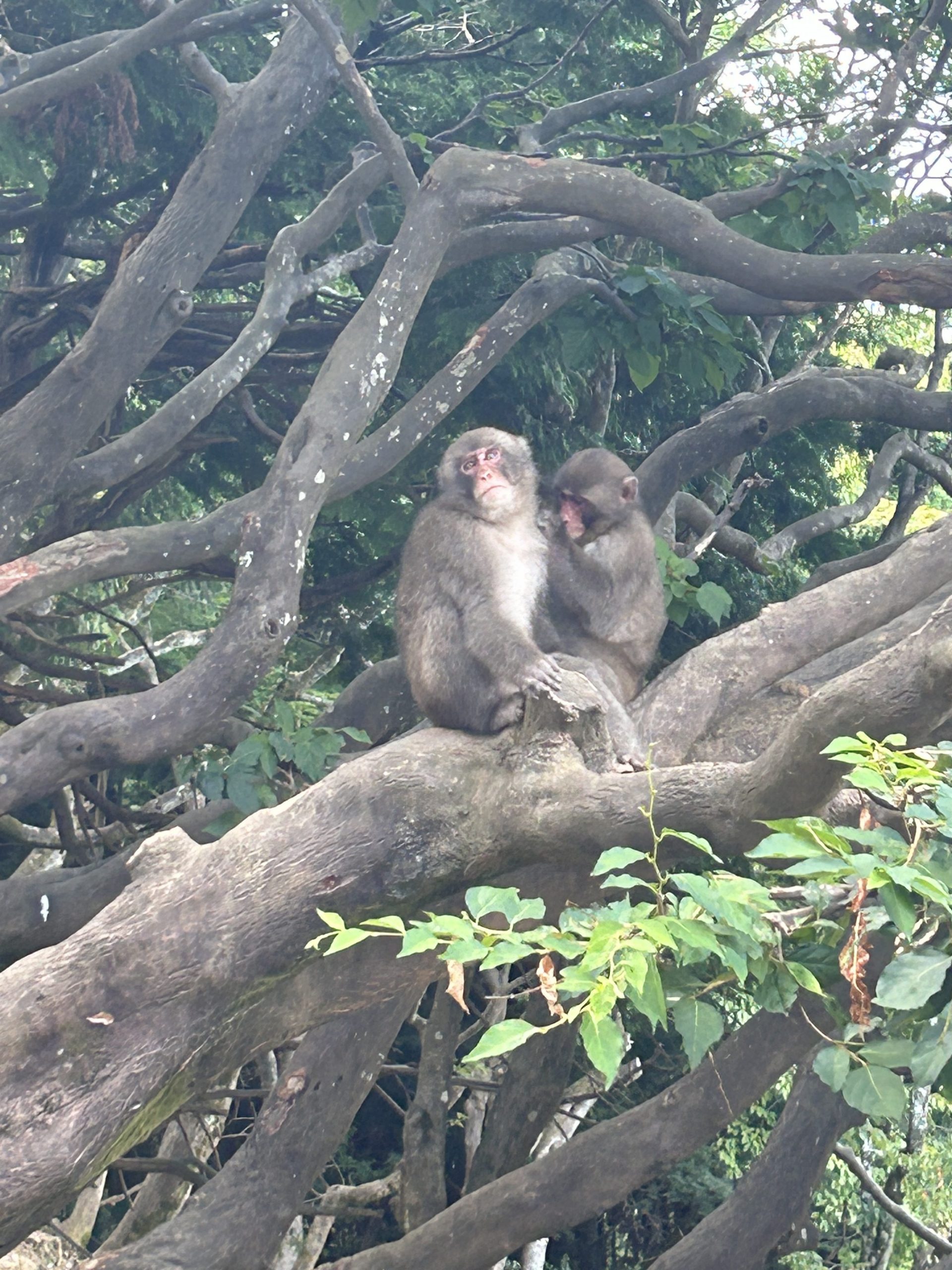
A few days ago, my parents and I visited the famous Kyoto’s Arashiyama Monkey Park Iwatayama. Although the hike was long, it was worth it to see the beautiful forest and the historic city of Kyoto, one of Japan’s oldest cities. The climb to the top of the mountain was made easier by the cool shade provided by passing clouds.
After about 15 minutes of hiking, we reached the top of the mountain and were welcomed by the park’s residents: macaque monkeys. These monkeys are native to Japan and are very familiar with the forest, though they have adapted to receiving food from visitors since the park opened. To feed the monkeys, we had to enter a small building with cage-like windows. Here, we could buy bags of fresh fruit or peanuts for about ¥100 each. Some monkeys were gentle and careful while eating, but others were picky and refused the nuts.
A rule of the park is that you must not bring any monkey food outside the feeding area, as the monkeys would start to pickpocket visitors in the park. Ponds on the mountain also featured koi fish, adding to the park’s overall aesthetic appeal. The monkeys and the koi didn’t get along, but watching the animals interact was also pleasurable.
Overall, the park was fantastic and offered a comfortable and enjoyable experience interacting with monkeys up close.
Compared to a previous visit to Jigokudani Monkey Park, the hike here was steeper and it was a hotter day in general, making it hard to compare both days at two different monkey parks. However, I enjoyed the feeding interactions more at this park.
Jigokudani, located in a more remote area, required a Shinkansen ride, making it a more expensive trip. Though it’s in a remote location, Jigokudani is notable for its 200 monkeys that visit the onsen daily. The advantage of Jigokudani is that you can see monkeys in their natural habitat and observe their behavior away from human influence. While exploring, we discovered a special onsen (hot spring) for the monkeys. This onsen is naturally heated by geothermal energy from the earth. In Jigokudani, it was nice to see groups and families of baby monkeys. There, social interactions between the monkeys was more in display for visitors. We saw many more age groups in the park, including trouble-making males trying to defend their territory. Mothers collaborating into making a baby monkey daycare under the bridge, so more monkeys can scavenge for food. Even though the monkeys left during the afternoons into the forest to eat cicadas, the monkeys were well fed by the caretakers in the park. The monkeys were only handled by the park staff, so that the monkeys don’t start associating visitors as “food-givers”, because being next to the monkeys by yourself may be dangerous.
One downside of Jigokudani Monkey Park is that if you’re hoping to interact with the monkeys, you might be disappointed. The monkeys there are wild and generally not interested in interacting with humans. Additionally, we observed more aggressive behavior among the monkeys, with some fights and screams. The staff also had limited ability to intervene and stop these fights. It’s important to be cautious and avoid eye contact with angry monkeys, as this can make the situation worse.
Despite these challenges, Jigokudani offers a unique opportunity to observe monkeys in their natural habitat. If you appreciate wildlife and are prepared for a more hands-off experience, the park provides a fascinating glimpse into their behavior and daily life. The serene setting and the chance to see monkeys in the wild can be very rewarding. Just remember to follow the park’s guidelines and respect the monkeys’ space for a safe and enjoyable visit.
In summary, if you want to see monkeys in the wild and don’t mind spending a bit more, Jigokudani is a great choice. If you have young children, are up for a bit of a hike, and want a more interactive experience, the Kyoto’s Arashiyama Monkey Park is ideal. If you love monkeys, visiting both parks is definitely worth it!
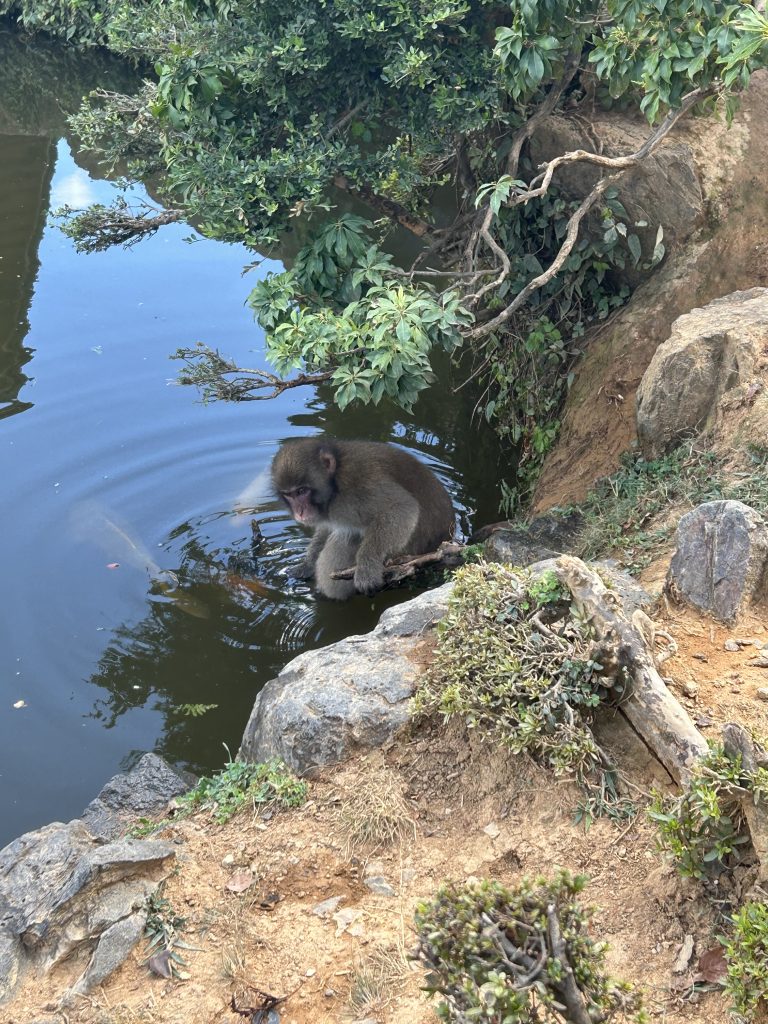
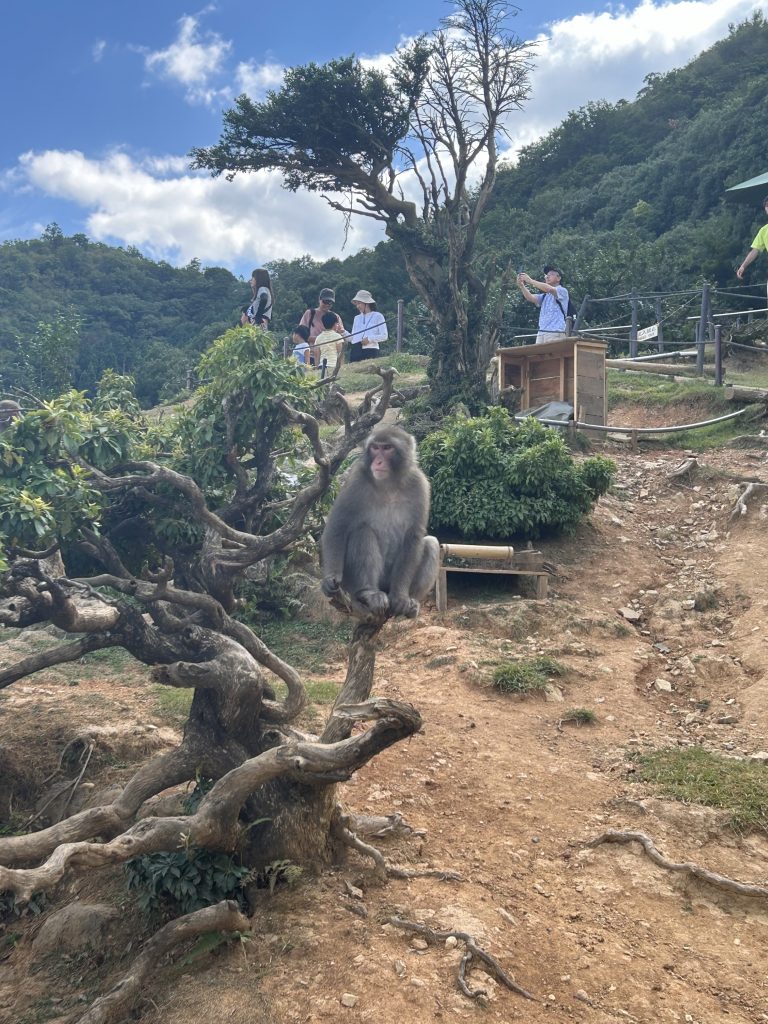
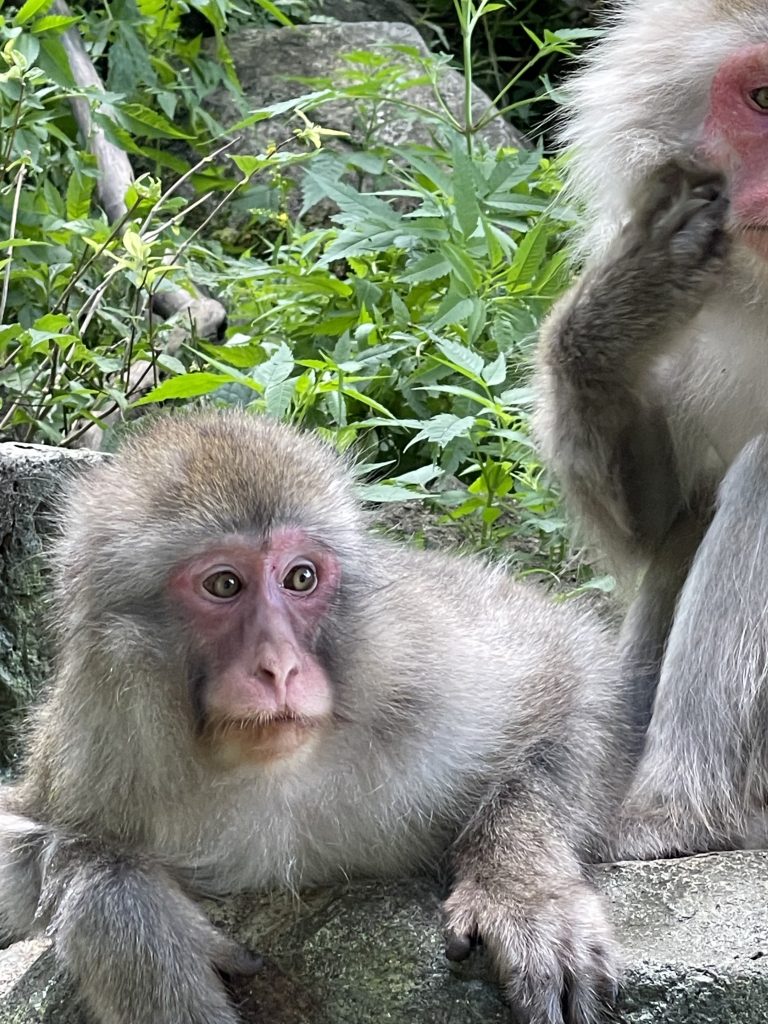
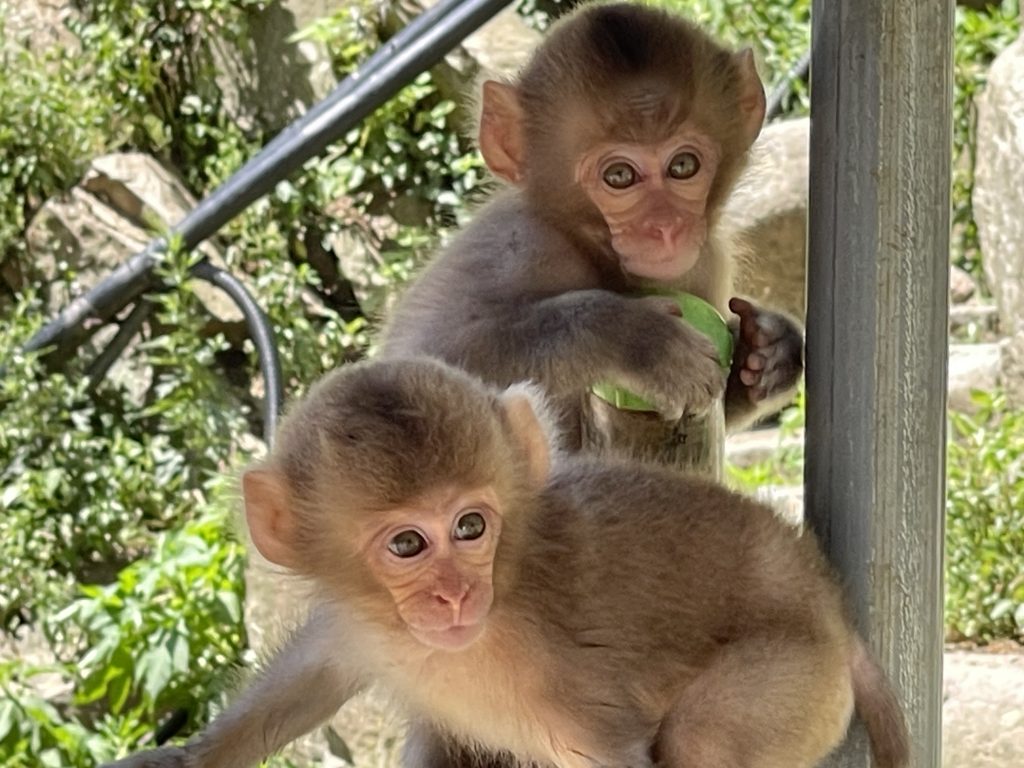
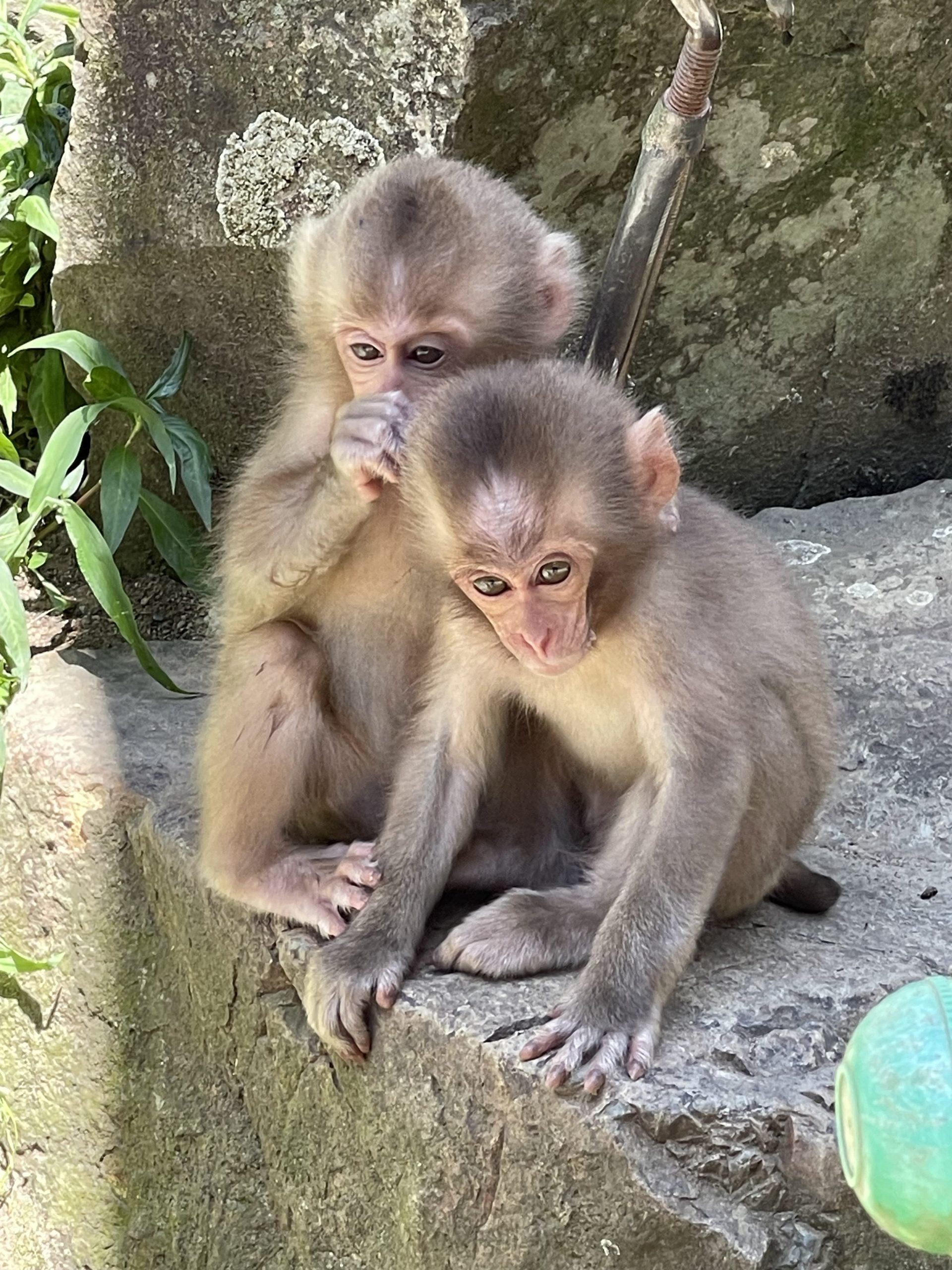
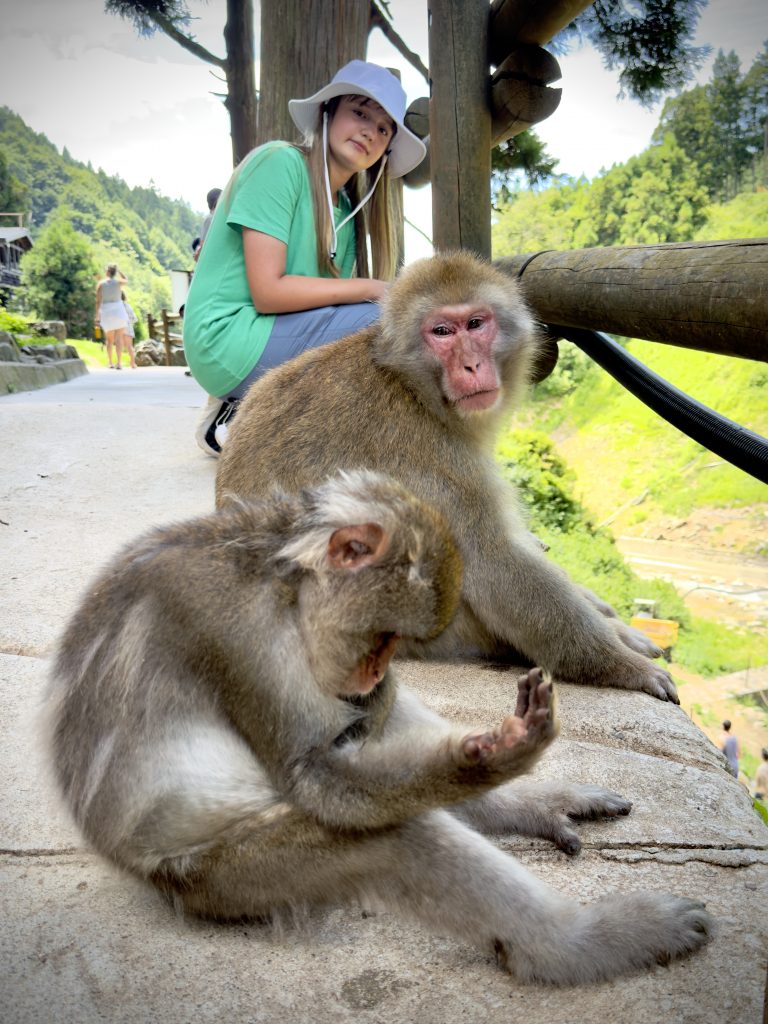
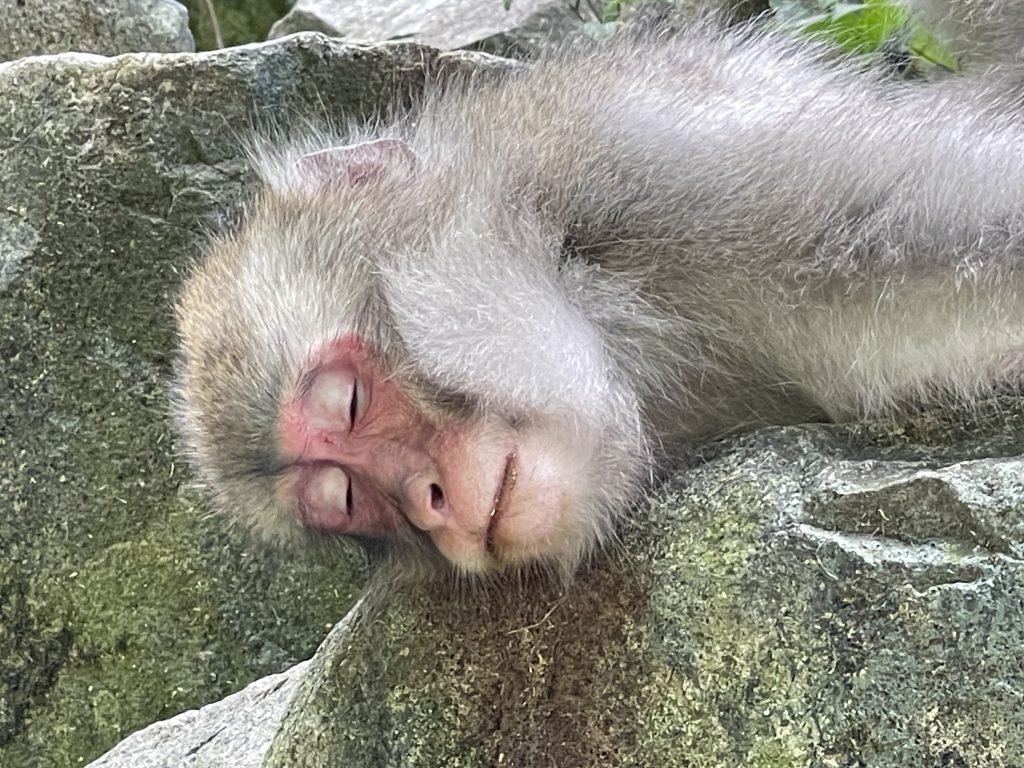

I decided to make this post about Hobbies, because lately I’ve been interested in what people enjoy doing in their lives. Hobbies are what people do when they have spare time, just for fun. Often when I’m done with my homework, I have spare time, so I do one of my hobbies. My main hobbies are drawing, writing, coding and dancing. I noticed that I enjoy coding in the morning, writing during the day, and drawing in the afternoon. I noticed when I started listing my hobbies, that most of them are close work. For balance, I also go for walks with my dog, Bruno. On Saturdays, I often have golf lessons and I really like dancing when I have spare time.
I’d love to hear about your hobbies. Please write about your favourite hobbies in the comment section!
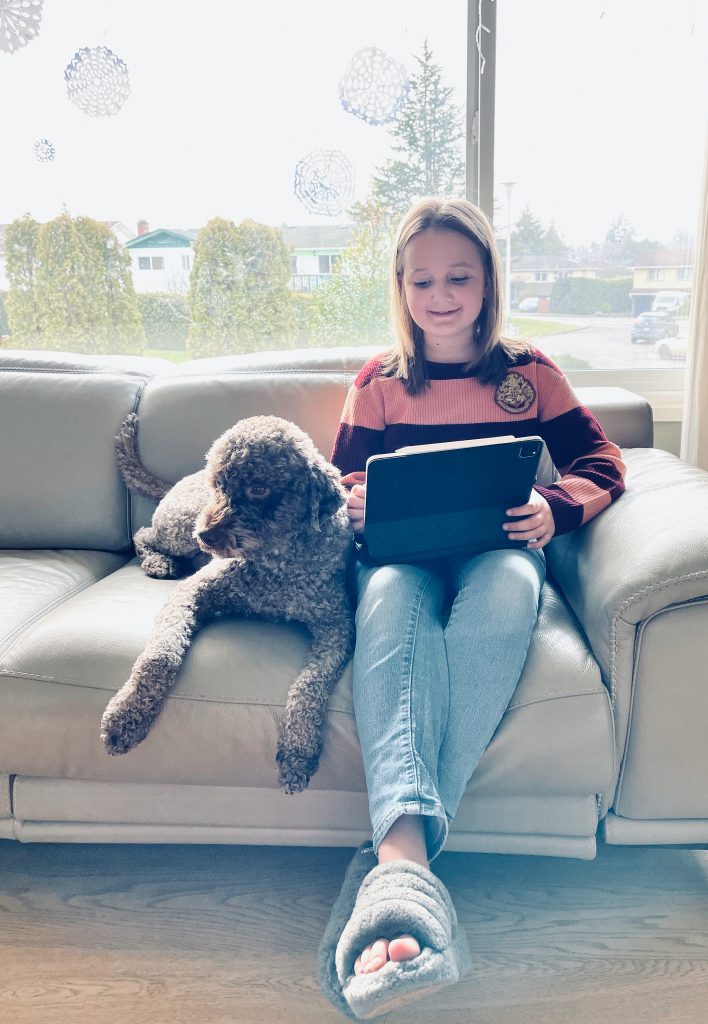

Today my post is going to be about drawing. I Ike to look at different types of art, for example, realistic, abstract and anime types. The styles that I enjoy drawing the most are anime and manga. Both are very similar in the way that the shape the human body is drawn. The difference that is really noticeable is the way in which the eyes are drawn. Anime is one of my favourite styles of drawing, because it’s more on the cartoonish side compared to the realistic art style, particularly when drawing people or animals. The eyes in anime are bigger and have more highlights. The anime-style female eyes tend to have bigger and thicker eyelashes than in other art styles, which creates a cute look.
I also like other styles of art in their own specific features. I like the realistic style and wish to learn more about it, because it is really cool to paint or draw an image on a canvas that looks like a photo of something.
The amazing thing about abstract art is that it’s basically drawing shapes with a variety of different colours and layering them on top of each other, creating a unique masterpiece.
Those are my favourite styles of art, and I am looking forward to learning about your favourite styles in the comments!
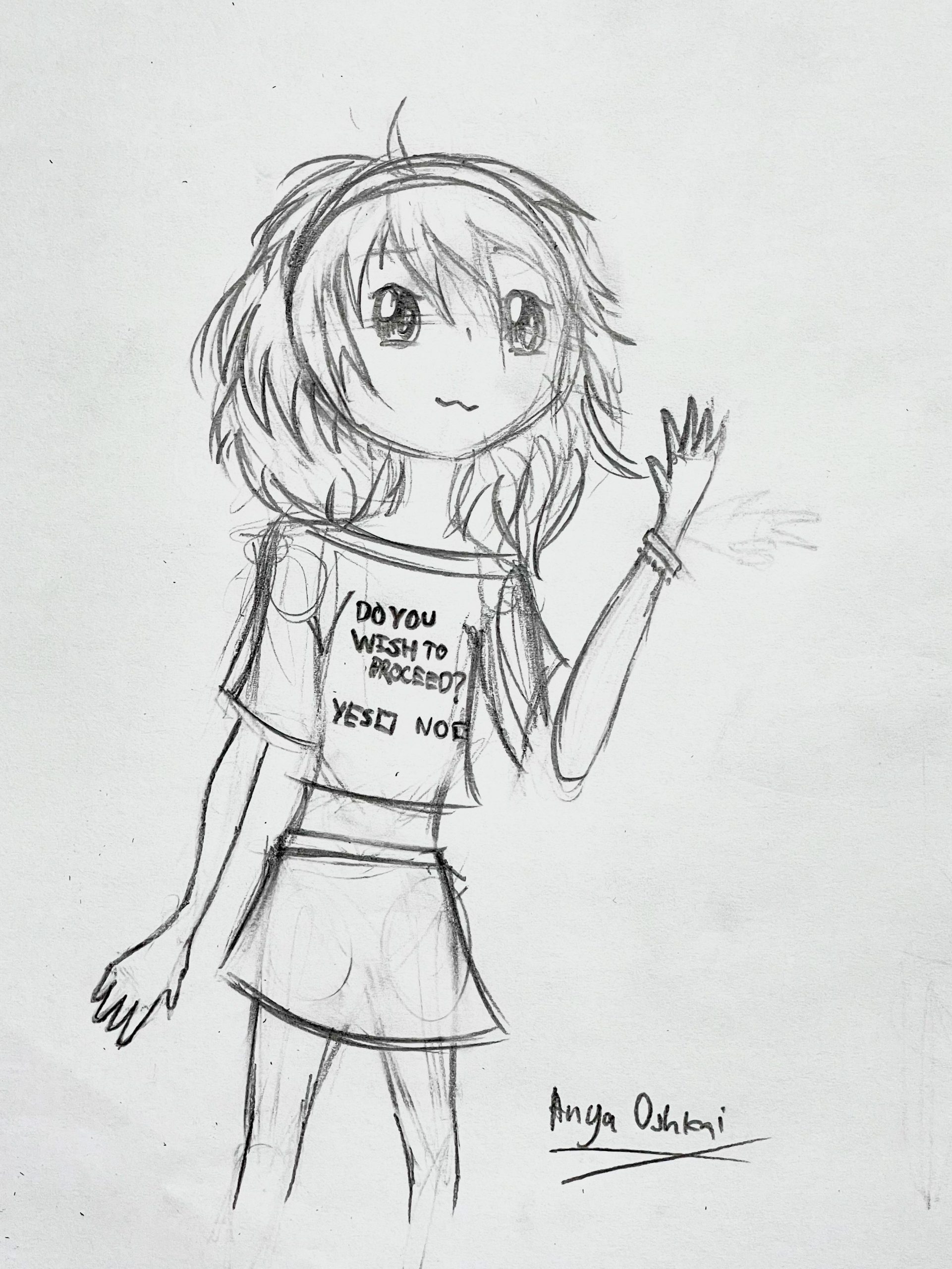
A couple of weeks ago, I had an idea about selling merchandise. I looked through other people’s merchandise online (“the merch”), and I noticed that they usually put their signature character on their products. So before I got started on creating merchandise, I started skeching some ideas of signature characters. But I didn’t have a lot of interesting ideas, and that’s when I remembered the drawing some kind of Yeti- Bigfoot- cute things earlier, and I thought: JACKPOT! The perfect signature character!
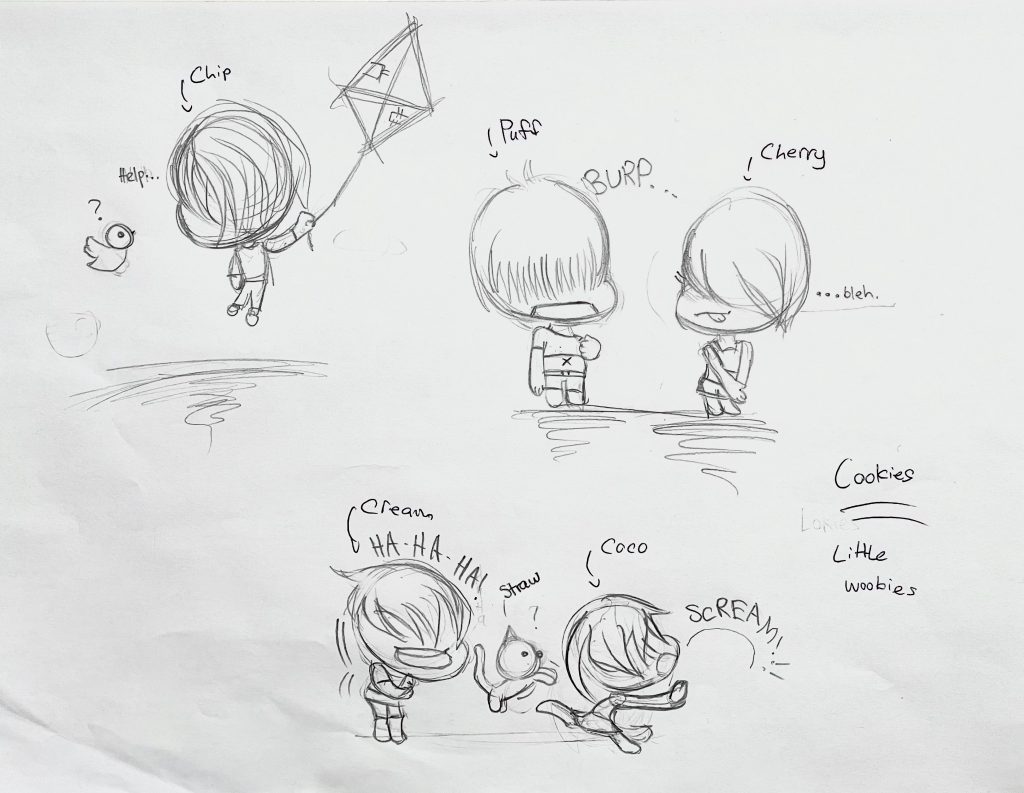
I then traced the little characters in the app ProCreate on my iPad. When I was done, I realized that the characters were missing something. Suddenly, I knew what was missing: my signature characters names. I still didn’t have a clue about what they where! So I did some research about Yetis, but then I realized that my characters didn’t look quite like Yetis. They looked like Wookies! If you don’t know what Wookies are, they are a type of animal that is in the Star Wars world. My creatures didn’t look exactly like Wookies too, because they where a lot cuter than Wookies. So then I had a brilliant idea: I took the first letter in the word “Cute”, and put it instead of the the letter W in the word “Wookies”. So the new name for my signature characters was “Cookies”! I was very pleased with myself, and I started giving personal names to the Cookies. My main Cookie’s name is Cherry. You can see her at the top of my website holding a cherry. Eventually, I made up more names for my other Cookies. They are: Cream, Puff, Coco and Chip.
Later I also made up their personalities. Cherry is very good at expressing her emotions, and is very confident. Cream loves making fun of Coco. They are twins, and Coco wishes she had never met Cream in the first place. Puff loves to eat. If he could, he would eat chocolate, whipped cream, and raspberries for breakfast, lunch and dinner. Chip is very quiet, and has a teeny-weeny crush on Cherry. He wishes he could express his feelings like her. Generally, most of them get along well. Oops! I almost forgot to mention Cream’s and Coco’s cat, Straw. Straw loves fishy crackers and would jump off a cliff just to taste a bite of one. He loves all the Cookies very much, and loves all the new people he meets, including you!
This is the end of this post, and please make sure to check out my new merch, featuring the Cookies!
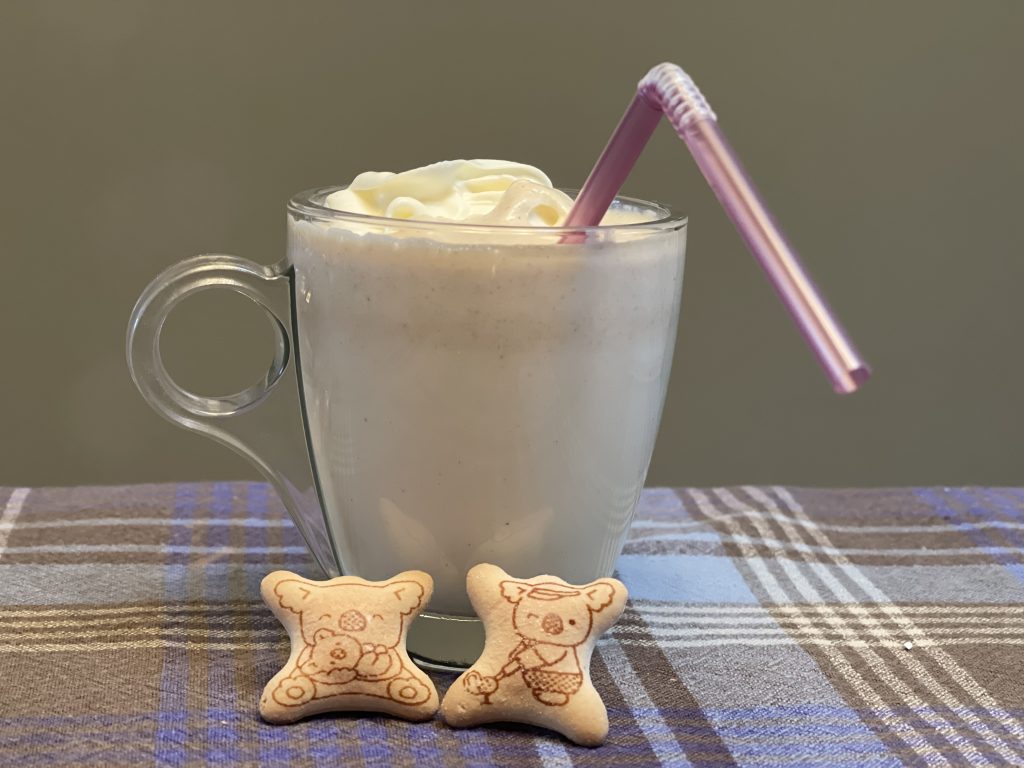
Today, I decided to start the morning off with something sweet to drink. Honestly, I don’t remember if I ever made or invented a drink. To start, I made a small list of the ingredients I enjoyed the taste of in my head. The ingredients were: peanut butter, milk and sugar. I ended up with some kind of milkshake-smoothie drink. I made it by adding a full table spoon of peanut butter to the milk and mixed the gooey substance of my soon-to-be awesome drink. At first, it tasted like a peanut butter-flavoured milk. It was good, but not good enough. You know how peanut butter doesn’t really taste sweet? People add jam to make the peanut butter taste sweeter. Well now you know why people make peanut butter AND JAM sandwiches. Well, my instinct told me that jam wouldn’t taste quite right with my sort of drink. And as usual, my instinct was right. Note: My instinct is probably NEVER wrong. Anyway, I decided to add a teaspoon of sugar into my drink. I shook my drink vigorously in a bottle to get the sugar to dissolve in the drink. One minute later, I opened the bottle and had a taste. IT WAS AMAZING! Tip: when you are done, make sure to put some whipped cream on top of the drink!
Make sure to try to making this awesome and simple drink at home with your family!
Hi! Welcome to my website. I’m going to begin my blog by telling how I had the idea to start a website just for kids.
One day, my dad was showing me new photos he posted on his website. I then remembered that I had a bunch of photos on my iPad that I thought would be cool to show to other people. And I also like looking at other websites that are kid-friendly. I enjoy reading about what people like to do in their spare time. My dad and I were probably thinking the same thing, because a moment later he asked me: “Hey, wouldn’t it be cool if you started your own website?” You can probably guess what my answer was!
